#beatniks
Text
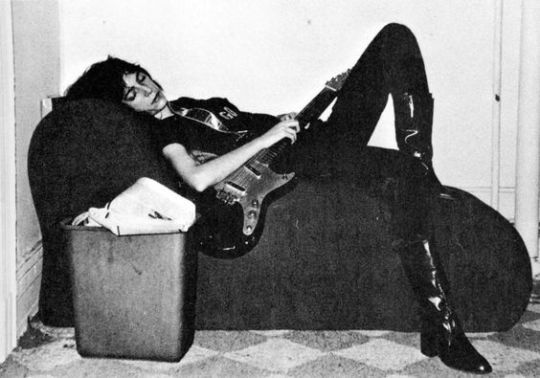
“Patti Smith captured sleeping with her guitar.”
#patti smith#robert mapplethorpe#poetry#just kids#60s#1960s#poet#bob dylan#william burroughs#allen ginsberg#jack kerouac#beatnik#beatniks#horses#patti smith group#david bowie#hippie#iggy pop#vintage#sylvia plath#the bell jar#the virgin suicides#black swan#girl interrupted#proto punk#protopunk#punk#punk poetry#new york#new york city
6K notes
·
View notes
Text

A rent party in Greenwich Village, ca. 1956. A rent party was one in which the guests passed around the hat to help the host pay their rent.
Photo: Weegee via Int'l Center of Photography/All That's Interesting
#vintage New York#1950s#Weegee#rent party#vintage Greenwich Village#Bohemia#hipsters#congas#conga drums#dancer#dancing#beatniks
384 notes
·
View notes
Text
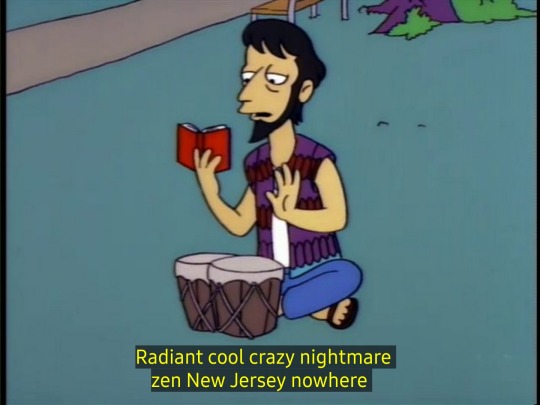

314 notes
·
View notes
Text
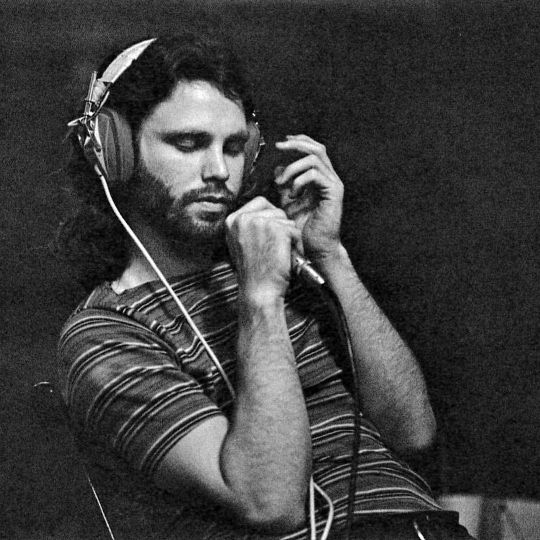



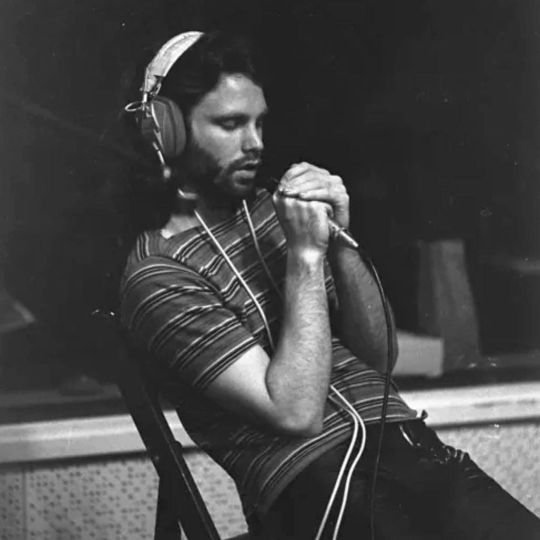
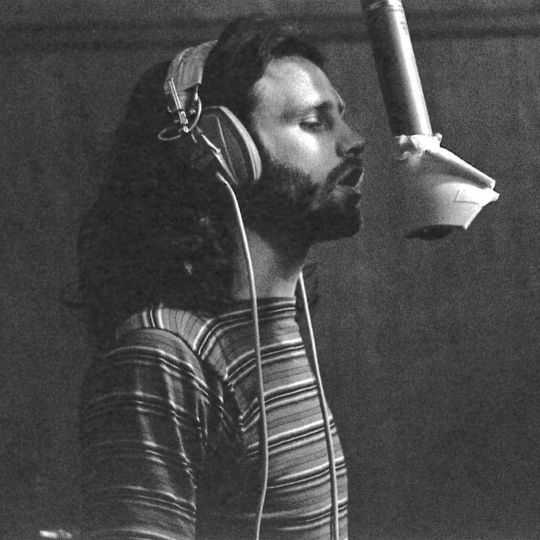
Young Gods :: Jim Morrison
558 notes
·
View notes
Text
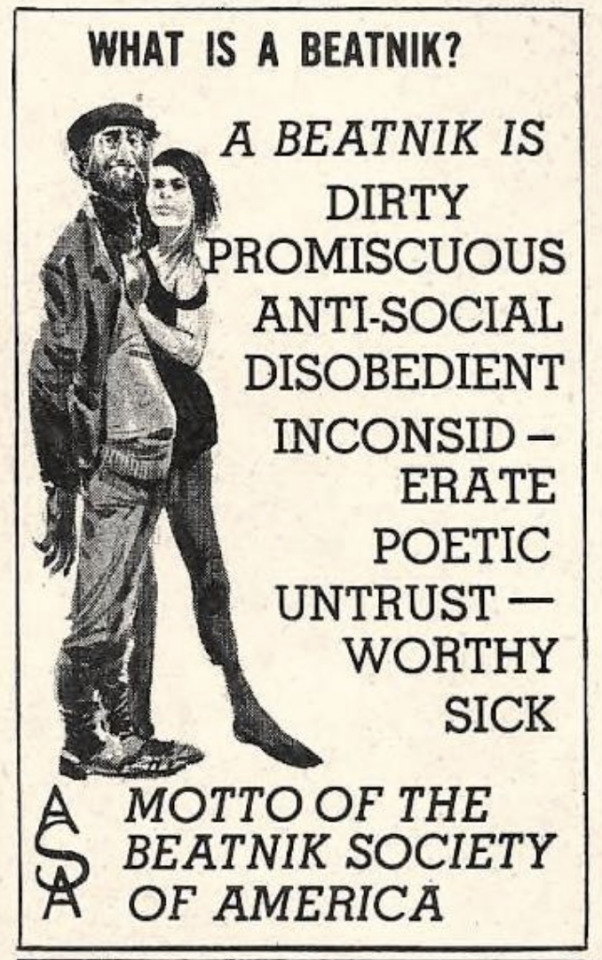
What is a beatnik?
A beatnik is dirty, promiscuous, anti-social, disobedient, inconsiderate, poetic, untrustworthy, sick. -- Motto of the Beatnik Society of America
280 notes
·
View notes
Text
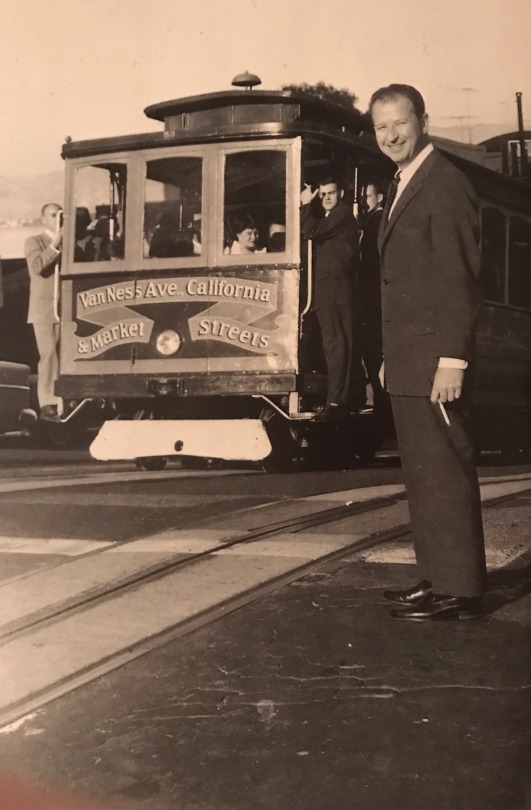
Herb Caen, the man who coined the term “beatnik.”
69 notes
·
View notes
Photo

Beatniks on opera house steps / Stockholm - 1965.
768 notes
·
View notes
Text

Maila 'Vampira' Nurmi in The Beat Generation (1959).
100 notes
·
View notes
Text
Bob Dylan credits Jack Kerouac and Gore Vidal with “setting the scene” by having gay sex in the Chelsea Hotel in 1953
146 notes
·
View notes
Text
The chapter of Royston Ellis meeting the Beatles is so wild.
He first hits on George at the Jacaranda. George responds to this with a casual “oh, you’d love my friends” and brings him to Gambier Terrace:
Also dropping into the Gambier Terrace pit was a special guest, Royston Ellis, “King of the Beatniks.” The bearded bard, who featured in TV documentaries and press articles whenever an offbeat teenage angle was needed, was in Liverpool to read his poetry at the university on June 24/25, and he swiftly found himself drawn into the Beatles’ company. The conduit was George, who (with nothing else to do while John, Stu and Paul were in school) was hanging around the Jac when the wandering coffee-bar poet traipsed in, drawn by hip radar to “the happening place.” Avowedly “trying everything,” Ellis was an active bisexual in this period of his life and he took an immediate fancy to George: “He looked fabulous with his long hair and matelot-style striped T-shirt, very modern, which is why I deliberately spoke to him. I was nineteen and he was seventeen and we clicked right away.”15
George took Ellis, his typewriter and his duffel bag back to Gambier Terrace to meet John and Stu. A rapport was quickly established and Ellis was invited to “crash” for a few days—yet another occupant for the filthy back room.
Then Ellis hits it off with John and Stu and wants them as a backing band:
Ellis says he developed a particular rapport with John and Stuart and that they discussed poetry, art and London. When he left, they spoke of doing it again sometime: “We were talking about how I wanted a band to come to London and back me on my Rocketry performances, and they were thrilled at the idea.” Art school studies finished the following Friday, July 1, marking the end of Stu’s fourth year and John’s third and last because the college was waving him goodbye. The exam results, when they came through on August 1, were just as expected: John failed and was out, Stuart passed the NDD, for which he received a certificate. The option was there for him to do a fifth year and attain the highest available qualification, the Art Teacher’s Diploma (ATD), akin to a degree and entitling him to become a teacher … but both he and John were pondering a period as prospectors, and doing something again with Ellis was a definite possibility.
So much so, Ellis is responsible for the first* two mentions of the band in the newspaper:
As for Ellis, so much was he enthused by the possibility of appearing with them again that he soon got the Beatles their first mention in a music paper. It was the July 9 edition of Record and Show Mirror, where a supercilious little article about “the bearded sage of the coffee bars” ended “he’s thinking of bringing down to London a Liverpool group which he considers is most in accord with his poetry. Name of the group? ‘The Beetles’”
….A born publicist, Royston Ellis knew how to manipulate a follow-up, writing a letter for publication that clarified a point in the first. He expressed his intention to find a group that would join him on TV appearances with Bert Weedon and the Shadows, and reiterated, “For some time I have been searching for a group to use regularly, and I feel that the ‘Beetles’ (most of them are Liverpool ex-art students) fill the bill.”
John and Stu decide to go to London on their own to join Ellis…but then chicken out:
By July 10, at the end of his three-year art school vacation, John had arrived at a key decision in his life: he would try to earn his living from the guitar. “I became a professional musician the day I got a red letter from the art college saying ‘Don’t bother coming back next September,’ ” he later said.31 Cyn would remember, “John decided that this [music] was very definitely the life for him. All the ideas that everyone else had for him of making an impact on the art world faded into the back of beyond with incredible rapidity, and with almost no regret at all. Aunt Mimi was distraught. Her view of his future couldn’t have been blacker at that time.”32
These events coinciding, it seems John and Stu decided to head south and hang out with Royston Ellis. Allan Williams is emphatic on the matter: he says John and Stu “split the Beatles and went down to London.”33 Norman Chapman would remember Stu asking him for a lift through the Mersey Tunnel one day so he (or he and John) could hitchhike to London—“They wanted to go down to London and become involved in this poetry-music scene.” Beat poets led a nomadic life by definition. Ellis lived for periods in all sorts of places, but his main base was still his parents’ house, at 31 Clonard Way, Hatch End, Pinner, Middlesex, a pleasant detached villa with the name Denecroft. This was the address he gave John while staying at Gambier Terrace. When Ellis arrived home one day his mother said he’d missed a visit from his “beatnik friends from Liverpool.” He never knew how many or who had come, but—as insane as it appears—John and Stu (and/or as Ellis always thought—hoped—George) had hitched the best part of two hundred miles, taken the trouble of locating his house in leafy Metroland, not stayed or left a message and then gone home again, never returning or making further contact. It makes no sense, but there it sits, illogical and incomplete.
Allan Williams remembers them being “back in Liverpool within a week, because it didn’t work out,” at which point the Beatles “reformed” as if they’d never been away. With bookings only every Saturday, it’s conceivable they did all this without missing one, and perhaps that was always the intention. However, while three independent witnesses (Ellis, Williams and Chapman) all remember something happening, none of the Beatles ever mentioned it—though in their interviews they talked with candor about everything. So it must remain in doubt, an intriguing puzzle unlikely to be solved.
There are two additional curiosities that may or may not be incidental. One is that, in the last days of July, a group of Liverpool art school students, apparently including John and Stu, went to London (or tried to go) to see a Picasso exhibition at the Tate Gallery. Second, and most fascinatingly, a set of photographs taken at this very time (mid-July 1960) in Stu and John’s studio-bedroom-slum at 3 Gambier Terrace includes several people they knew but not John and Stu themselves—perhaps because they were on the Hatch End trip. It was published on July 24 in the national Sunday rag the People in a sensation-splash headlined THIS IS THE BEATNIK HORROR. It’s as if a man on a flaming pie was pointing down at Flat 3, Hillary Mansions, Gambier Terrace, Liverpool 1. In six months, three Beatles moved in and the fourth was hanging out, the nation’s best-known beat poet had come here to get them high, and now, when a Fleet Street journalist and photographer were looking to substantiate a load of old tosh about dirty beatniks—reportage that could have been cooked up anywhere in the country—they landed in Stu and John’s room.34
Though hugely amusing, the feature had one unfortunate side-effect: because the address was given (a “three-roomed flat in decaying Gambier Terrace in Liverpool”) and some of the occupants (“well-educated youngsters”) were named, the landlord gave the tenant, Rod Murray, notice to quit. On August 15, everyone—Rod, Diz, Ducky, Stuart, John and sundry other bodies who’d joined them—would be out on the street.
—Mark Lewisohn’s Tune In, Ch 15 (May 31–Aug 15, 1960)
And Lewisohn is just like yup nothing to see.
So what the hell happened here? Was it just a school trip? Or was it a deliberate split?
#royston ellis#beat poetry#beatniks#tune in#1960#early liverpool#bug mysteries#i think about this once a week and just found the bit again#mine#mark lewisohn#reading tune in#prebugs#*i think they may have found an earlier mention since tune in printing#i have a june newspaper clip date in my timeline#john and stu#young george#june 1960#queer bugs#reading riding so high#joe mentions the dates of royston’s liverpool university appearance#june 24 1960 and davies says the first beetles mention in the newspaper is june 11#so theres some conflict there when was the first#just learned royston ellis died earlier this year#but kerouac website writers reached him in 2020 and he still claimed they got the BEAT ideat in the name from him#theyve got a clipping from june 5 with silver beetles#but lewisohn references a june 2 clipping with the A (beatles)#so thats too early for royston maybe they were deciding and flipflopping he helped settle on one i can see that#lalala i cant read its first mention in a music paper rather than a general newspaper
101 notes
·
View notes
Text
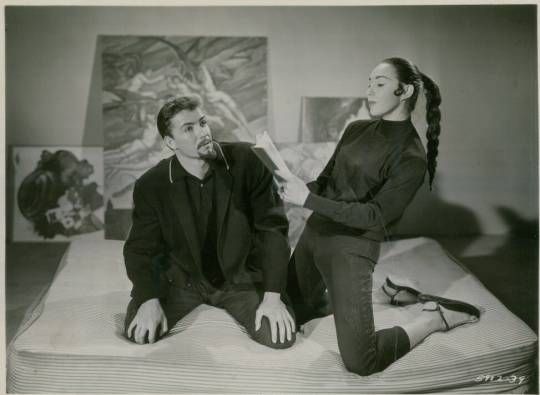
Beatsville, Swingville!
64 notes
·
View notes
Text

"Allen Ginsberg in front of the window"
Photo by Anton Corbijn, New York (1996)
17 notes
·
View notes
Text
"You can alter your surroundings by altering your point of observation, and that is an act of magic that is performed by every artist. You can't teach anybody anything, they don't know, already on some level. You can't show anyone anything they haven't already seen. They just won't see it.
Of course, there are people who just don't want to see. There's always the danger to see more than you can take, and consider the dedicated professional non-seers are in all positions of power. And non-seeing is an escalating process. The less you see today, the less you will see and so forth."
William S. Burroughs
The Technology of Wishing, Part 1
(Convention @ Naropa University, 1968)
#william s. burroughs#magic#artist#art#perspective#philosophy#sight#vision#meditation#yoga#the beats#beatniks#the beatniks#beat generation#heretics#poet#bard#writer#writing#quote#philosophy quotes
160 notes
·
View notes
Text

Another random pick-up from Psychotron Records is this weird collection from Moondog, who was this blind, homeless jazz musician who allegedly used to stroll around New York creating music out of trash whilst wearing a viking helmet...
You may already know his work from samples by people like Mr Scruff or The Wiseguys; which is where i first knew him from. I had an old file of MP3s with his 'popular' tracks but saw this and figured i would give it a go, even though there are no tracks on there that i recognised. Pete even warned me that it was a bit weird, but that just makes me want it even more.
It's only about 40 mins long and apart from one spoken word track, its all just made up of jazz rhythms that sound like they are being played on old pots and pans to a crowd of beatniks... and if you know me then you know i'm all in for that!
More Moondog by Moondog
23 notes
·
View notes
Text
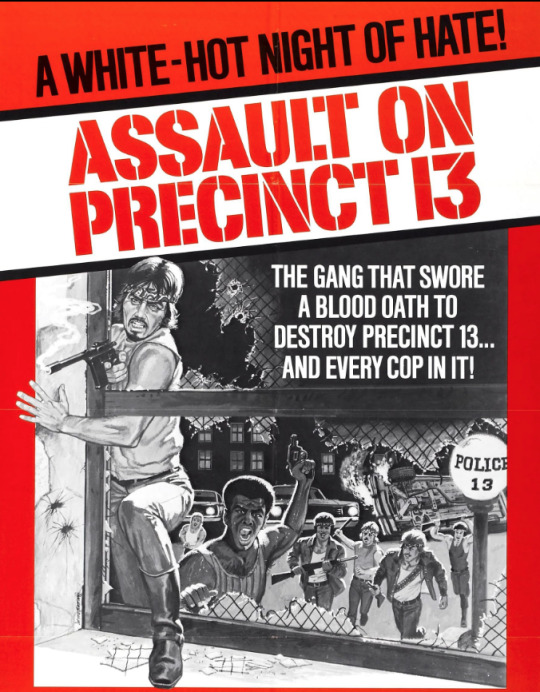

The Venice Division Police Station was the filming location for John Carpenter's Assault on Precinct 13 (1976).
In the 1950s, many Venice Beach beatniks ended up there.
42 notes
·
View notes